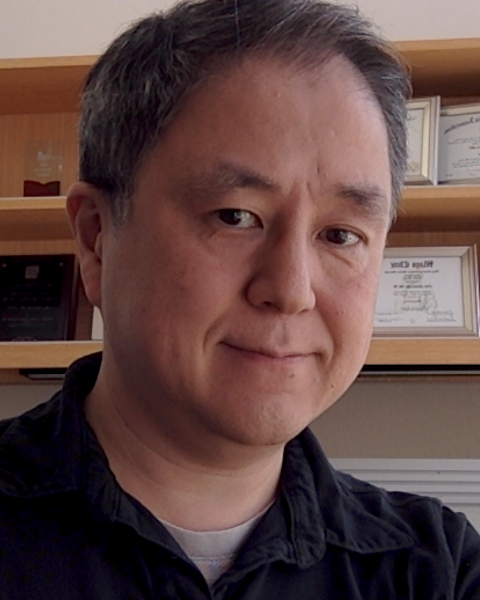Plenary
Session: Plenary Session 3
Katon Research Award Lecture: Game Changing Approach for Delirium: Novel Bispectral EEG Device and Epigenetic Investigation
Friday, November 10, 2023
11:30 AM - 12:00 PM CST
Location: JW Salon 6,7,8
CE: 0.5 CME

Gen Shinozaki, MD, DFAPA, FACLP
Associate Professor of Psychiatry
Stanford University School of Medicine
Palo Alto, California
Lead Speaker(s)
Bispectral EEG (BSEEG) device to detect delirium and predict outcomes
Delirium screening has been largely dependent on instruments, such as DRS or CAM. However, in a practical setting, those tools have not been consistently implemented. Although EEG has been well known to be useful in detecting delirium, its use is often practically limited for neurology specialists. Simplified EEG has been, however, used in different specialties to guide specific procedures. One is with anesthesia to monitor the depth of sedation. Another is with ECT to monitor seizure duration. We developed a novel BSEEG device and algorithm for delirium detection and outcome prediction. The BSEEG method has been validated in over 1,000 patients. The demo of the new BSEEG device with the iPhone app will be introduced at the presentation.
Role of Epigenetics in delirium pathophysiology and novel biomarker
The pathophysiological mechanism of delirium remains largely unknown, posing a challenge to the development of effective interventions. However, emerging evidence suggests that neuroinflammation, which is heightened with aging, can be induced through epigenetic changes, specifically with DNA methylation (DNAm). Our group has made significant contributions to this field by reporting several pieces of supporting evidence and discovering reliable biomarkers based on DNAm that have been validated and replicated across four independent cohorts.
Delirium screening has been largely dependent on instruments, such as DRS or CAM. However, in a practical setting, those tools have not been consistently implemented. Although EEG has been well known to be useful in detecting delirium, its use is often practically limited for neurology specialists. Simplified EEG has been, however, used in different specialties to guide specific procedures. One is with anesthesia to monitor the depth of sedation. Another is with ECT to monitor seizure duration. We developed a novel BSEEG device and algorithm for delirium detection and outcome prediction. The BSEEG method has been validated in over 1,000 patients. The demo of the new BSEEG device with the iPhone app will be introduced at the presentation.
Role of Epigenetics in delirium pathophysiology and novel biomarker
The pathophysiological mechanism of delirium remains largely unknown, posing a challenge to the development of effective interventions. However, emerging evidence suggests that neuroinflammation, which is heightened with aging, can be induced through epigenetic changes, specifically with DNA methylation (DNAm). Our group has made significant contributions to this field by reporting several pieces of supporting evidence and discovering reliable biomarkers based on DNAm that have been validated and replicated across four independent cohorts.
Learning Objectives:
- The audience will learn the effectiveness of the BSEEG method for future delirium patient care
- The audience will learn the potential role of epigenetics in the pathophysiological mechanism of delirium

